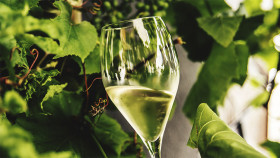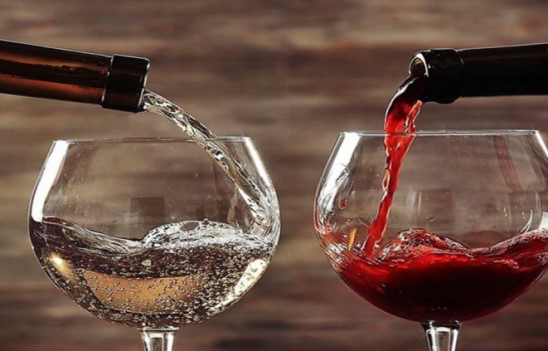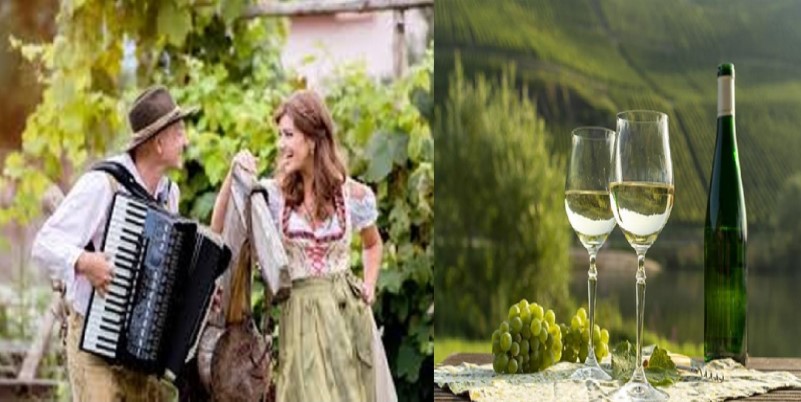We all have hobbies. In my life I have many. It’s the sea, the salt wind, and sailing. Adventure, fishing, and writing. And winemaking, which I’ve been studying for years. Winemaking is a process of learning and experimenting, where successful discoveries require new experiments. It is a never-ending process. I would like to bring here the opinions of the chemists who make wine yeast. There are many PhDs among them. They argue that the fermentation of white wine, in which all the sugar is eventually converted into alcohol by the yeast, takes place between 18 and 20°C. At higher temperatures, the fermentation process is stuck, and the wine with residual sugar cannot be considered dry, it is usually semi-dry or semi-sweet.
It took me 10 years of practice and experimentation to learn how to make dry white wine in a tropical climate where the air temperature often reaches 40-45°C during the day and varies considerably (down to 27-30°C at night). So, correcting the arguments of those certified specialists, I think I have every right to give myself a doctorate in winemaking. Of course, I will not reveal these secrets to the public, they are my “know-how”. The secrets of winemaking are a family heirloom, passed down from generation to generation. To anyone hoping to learn this art quickly, I can only say that this experiment, like life, will be full of surprises. It is like trying to find the perfect relationship with the first or a few first women or men in your life.

I would like to tell you the story of a unique wine. It’s called Riesling, one of the three best white wines in the world. It comes from the mountain valleys of Germany, where only frost-tolerant grapes survive the cold winters. The dry wine is made from barely ripe grapes harvested in September-October. Frost arrives and the frost-ripened grapes are sweeter and it is too late to make dry wine, only dessert semi-sweet. Young Riesling smells of geraniums, green apples, pears, peaches, and lemons. The best German Riesling is produced in the Mosel Valley, where a unique microclimate has developed. Here, there is no summer heat; the sun’s rays reflect off the surface of the local lake and the basalt rocks, warming the vineyards with gentle sunlight.
And the grapes are full of juice, making the best wine. Lower Austria’s Riesling is also good. The best Austrian Rieslings have a green lizard on the label!
German winemakers believe that this grape variety was bred in the IX-th century at the time of King Ludwig II, who owned Bavaria and other Germanic lands. At that time it was only popular in Germany. The fact is that Riesling ripens late, in November. Wine from this grape, harvested in September, turns out to be tart, for the amateur. This wine is served with boiled beef in fine restaurants, with sweet and sour jam made from the tropical fruit kiwi as a condiment for the meat.
Many of us know that all discoveries happened by accident. The uniqueness of this wine is no exception and here is the story. The Germans are a disciplined people. Legend has it that one day a messenger got lost on his way to bring the bishop’s permission to pick grapes at the monastery. He arrived two months late, in November. By then the grapes were overripe and some were even covered with mould. Imagine the monks’ surprise when it turned out that the wine from the ‘rotten’ grapes was much sweeter and more aromatic than the usual green grapes.
In 1716, Abbot Fulda of the Benedictine Order acquired the abandoned vineyards and ruins of the Johannesburg Monastery. The abbot was a great lover of wine and a skilled winemaker, and the ‘Riesling’ from the Johannesburg monastery cellars is still considered the standard.
In the XIX century, the wine became extremely popular in Europe. ‘Riesling’ was held in the same esteem as the most famous French wines. At the end of the 19th century, a bottle of ‘Johannesburg Riesling’ in St Petersburg cost twice as much as a bottle of ‘Chateau Lafitte’.
Let’s judge the color of the wine by raising the glass to eye level and holding it upright for a few seconds, then tilting it slightly to look at the surface. A good wine will be bright, shimmering in the light, with no carbon dioxide bubbles on the surface. Bubbles on the surface of any wine, except champagne, indicate that it is spoiled. The air has got into the wine as a result of improper storage. Carbon dioxide bubbles are caused by oxidation or weak fermentation in the wine.
After the visual assessment, let’s check how the wine smells. First, put the glass on your nose and smell the wine carefully. A quality wine should not smell of sulfur or yeast. Then swirl the glass on its axis, holding it by the stem. This will oxygenate the wine. After this, we will evaluate the smell of the wine again, because it is after the oxygenation that the true aroma of the wine is revealed.
The most pleasurable sensation is getting to know the taste. The correct way to drink wine is to wet your upper lip and then put some wine in your mouth to get it on your tongue. There are taste buds on our lips and tongue, and at that moment they are telling us about the sweetness, strength, acidity, and consistency of the wine.
Now, if you don’t need these tasting tricks and you trust the wine…then don’t waste your time fiddling, just take a big sip of the wine. After all, we want life to be fun, don’t we?


Be First to Comment